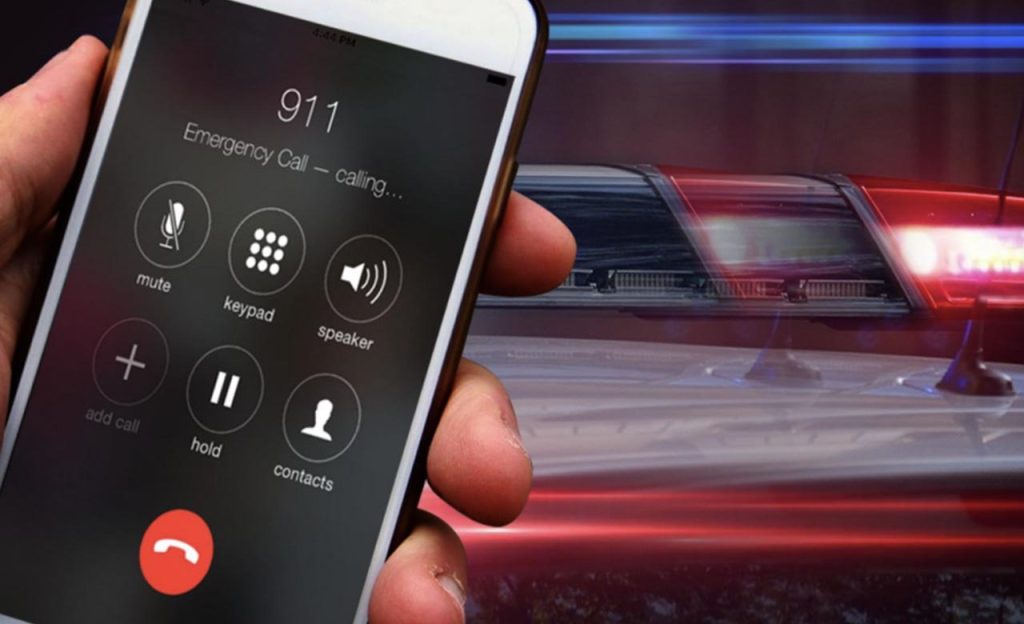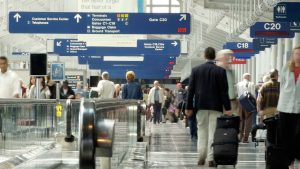Effective emergency response guarantees public safety, and using police dispatch operations helps people understand how to get Help when needed. How are police calls dispatched? Discussing the operation of a dispatching center addresses this question, including its role, main components, call handling, dispatch protocols, response levels, and the average national response rate for the USA. It also contains the typical codes used by dispatchers, practical case studies, and FAQs that improve the clarity of the work.
How Dispatch Centers Work
A dispatch center is the nerve center of emergency response. It gets calls for Help, processes them, and then dispatches the proper responders to the scene. The human interface ensures that the available frame is serviced around the clock, providing continuous relief for emergency services.
Role of Dispatch Center:
- Receive Calls: The primary function of a dispatch center is to receive emergency calls from the public. This can be through emergency lines, non-emergency police lines, or other communication methods.
- Assess and Prioritize: Dispatchers assess the severity of the situation, prioritize the call based on urgency, and determine the type of response required.
- Coordinate Responders: Dispatchers communicate with police officers, paramedics, and other emergency responders to provide them with necessary information and coordinate their actions.
- Provide Support: Dispatchers often instruct callers on how to stay safe or assist in medical situations until responders arrive.
How are Police Calls Dispatched in a Dispatch center?
- Technology: Advanced communication and information systems enable dispatchers to manage calls and coordinate responses efficiently. This includes Computer-Aided Dispatch (CAD) systems, GPS tracking, and real-time data sharing.
- Training: Dispatchers undergo extensive training to handle high-pressure situations, provide accurate information, and assist callers in distress.
- Communication: Effective communication is crucial for dispatchers to relay information between callers and responders accurately and swiftly.
- Coordination: Seamless coordination between different emergency services ensures that the right resources are deployed quickly and effectively.
How Are Police Calls Dispatched? and their handling types
- Injuries: Calls reporting injuries, whether from accidents, falls, or other incidents, require immediate medical attention and often police intervention to secure the scene.
- Crimes: These calls can range from theft and vandalism to violent crimes. The nature and severity of the crime dictate the response level.
- Incidents: Non-criminal incidents, such as traffic accidents, disturbances, or lost persons, also require police response and sometimes additional services like tow trucks or social services.
- Potential Violence: Situations involving threats, domestic disputes, or other scenarios with the potential for violence need careful handling to prevent escalation.
- Death Investigations: Calls reporting deaths require police to secure the scene, conduct initial investigations, and coordinate with medical examiners.
Dispatch Protocols at Shift Change
Seamless shift changes are crucial in dispatch centers at this time to ensure continuity of service. The major protocols are:
- Briefing: Outgoing dispatchers brief incoming personnel on ongoing incidents, pending calls, and critical information.
- System Check: Incoming dispatchers check communication and dispatch systems to ensure they are fully operational.
- Documentation: Accurate logging of all activities and incidents during the shift ensures that no information is lost during the handover.
Response Levels
Dispatch centers categorize responses based on the urgency and nature of the call:
- Slow Response: Non-emergency situations that do not immediately threaten life or property. Examples include noise complaints or minor traffic incidents.
- Urgent Response: Situations requiring prompt attention but not life-threatening, such as minor accidents or disturbances.
- Superfast Response: Emergencies involving immediate threats to life or severe property damage, such as violent crimes, major accidents, or fires.
Dispatch Codes Used by Dispatchers
Dispatchers use a diversified range of codes that can promptly communicate to the responders. Though such codes may substantially vary from one jurisdiction to the other, some well-accepted codes in use include:
- 10 Codes: A widely used system of numeric codes.
- 10-4: Acknowledgment (OK)
- 10-20: Location
- 10-33: Emergency, all units stand by
- 10-50: Accident (fatal, personal injury, property damage)
- 10-97: Arrived at the scene
- 10-99: Officer needs help/emergency
- Signal Codes: Specific to some regions, these codes indicate particular types of incidents.
- Signal 30: Alarm
- Signal 50: Officer in distress
- Signal 100: Wanted/stolen
- Code Red: High alert, typically used for life-threatening situations.
- Code Blue: Medical emergency.
- Code Yellow: Caution usually indicates a hazardous situation.
Average Response Rate in the USA
The response time targets for dispatch services in the United States will be quite average because they depend on the population served and the urgency of the location. Due to resources, urban areas are much more likely to have a faster response time than rural or suburban ones. Generally speaking, the response time in the USA should average:
- Urban Areas: Response times for high-priority emergencies can range from 5 to 10 minutes.
- Rural Areas: Response times may be longer, often between 15 to 30 minutes, due to greater distances and fewer resources.
Practical Call Experience
A practical example of a call to a dispatch center illustrates the typical flow of information and the dispatcher’s role in ensuring Help arrives promptly:
Caller: “Hello, my name is Emily. I am in danger. Someone is trying to break into my house.”
Dispatcher: “Emily, I understand. Are you in a safe place right now?”
Caller: “I’m hiding in my closet.”
Dispatcher: “Stay calm, Emily. Can you tell me your address?”
Caller: “It’s 123 Elm Street.”
Dispatcher: “Help is on the way, Emily. Do you know if the person is armed?”
Caller: “I don’t know. I just heard glass breaking.”
Dispatcher: “Alright, remain quiet and stay on the line with me. Officers will be there shortly.”
Within minutes, officers were with the suspect, and he was taken into custody, ensuring Emily’s safety. The dispatcher, meanwhile, remained on the line with Emily, consoling her and updating her about the officers’ arrival until they confirmed the scene was secure.
Communication Flash Cards in Police Dispatching
Communication flash cards are visual aids used to facilitate clear and effective communication. In police dispatching, these cards are crucial tools to streamline and enhance dispatching, especially in high-stress or complex situations.
Key Uses:
- Emergency Situations:
- Flash cards with symbols or phrases can quickly convey critical information, such as types of incidents (e.g., “fire,” “accident,” and “assault”), ensuring swift and accurate responses.
- Training:
- New dispatchers use flashcards to familiarize themselves with codes, protocols, and standard procedures, aiding in faster learning and retention.
- Language Barriers:
- Cards with multilingual text or universally recognized symbols help dispatchers communicate with non-English speakers or those with limited English proficiency.
- Special Needs:
- Different emergency services seamlessly coordinate to deploy the right resources quickly and effectively.
- Different emergency services seamlessly coordinate to deploy the right resources quickly and effectively.
Benefits:
- Enhanced Clarity: Visual aids reduce misunderstandings and miscommunication.
- Efficiency: Quick visual references speed up the dispatching process.
- Accessibility: Facilitate communication across language and ability barriers.
Practical Case Studies
- Urban Emergency:
- Situation: A call comes in reporting a robbery in progress at a downtown convenience store.
- Response: The dispatcher uses a superfast response protocol, sending multiple patrol units and notifying the nearest available officers. Within 4 minutes, police arrive on the scene, apprehend the suspect, and secure the area.
- Outcome: The quick response prevents further harm, and the suspect is taken into custody.
- Rural Incident:
- Situation: A caller reports a severe car accident on a rural highway with potential injuries and a trapped passenger.
- Response: The dispatcher sends the nearest emergency responders, including police, fire, and EMS units. Due to the location, response time is approximately 18 minutes.
- Outcome: First responders extricate the passengers and provide necessary medical care before transporting them to the nearest hospital.
- Domestic Dispute:
- Situation: A neighbor calls an emergency number about a loud domestic dispute with potential violence.
- Response: The dispatcher sends an urgent response team, including a police unit trained in domestic violence intervention. The police arrive in 8 minutes and de-escalate the situation.
- Outcome: The individuals involved receive appropriate support and services, preventing further escalation.
FAQs
- What is the role of a dispatcher?
- Dispatchers receive emergency calls, assess the situation, prioritize the response, and coordinate with appropriate emergency responders.
- How do dispatchers prioritize calls?
- Emergency dispatch prioritizes calls based on their severity and urgency. They prioritize life-threatening emergencies first, followed by incidents that pose potential risks to life or property.
- Emergency dispatch prioritizes calls based on their severity and urgency. They prioritize life-threatening emergencies first, followed by incidents that pose potential risks to life or property.
- What technology do dispatch centers use?
- Dispatch centers use Computer-Aided Dispatch (CAD) systems, GPS tracking, real-time data sharing, and advanced communication systems to manage and coordinate responses effectively.
- What are ten codes?
- Dispatchers and responders use ten numeric codes to communicate quickly and efficiently. Examples include 10-4 (Acknowledgment) and 10-20 (Location).
- How are dispatch protocols handled during shift changes?
- During shift changes, outgoing dispatchers brief incoming personnel, perform system checks and ensure detailed documentation for seamless transitions and continuous service.
How Are Police Calls Dispatched? Summarized
Understanding the dispatching of police calls emphasizes the dispatch centers’ important role in public safety. They will use very complex technology, face very difficult training, and be within very tight coordination in handling a very wide range of emergencies, from receiving and judging calls to quick-response coordination: dispatch centers are crucial. How are Police calls dispatched? We can cover this question in different aspects to provide further detailed analysis and updated content following Graspsolutions.





